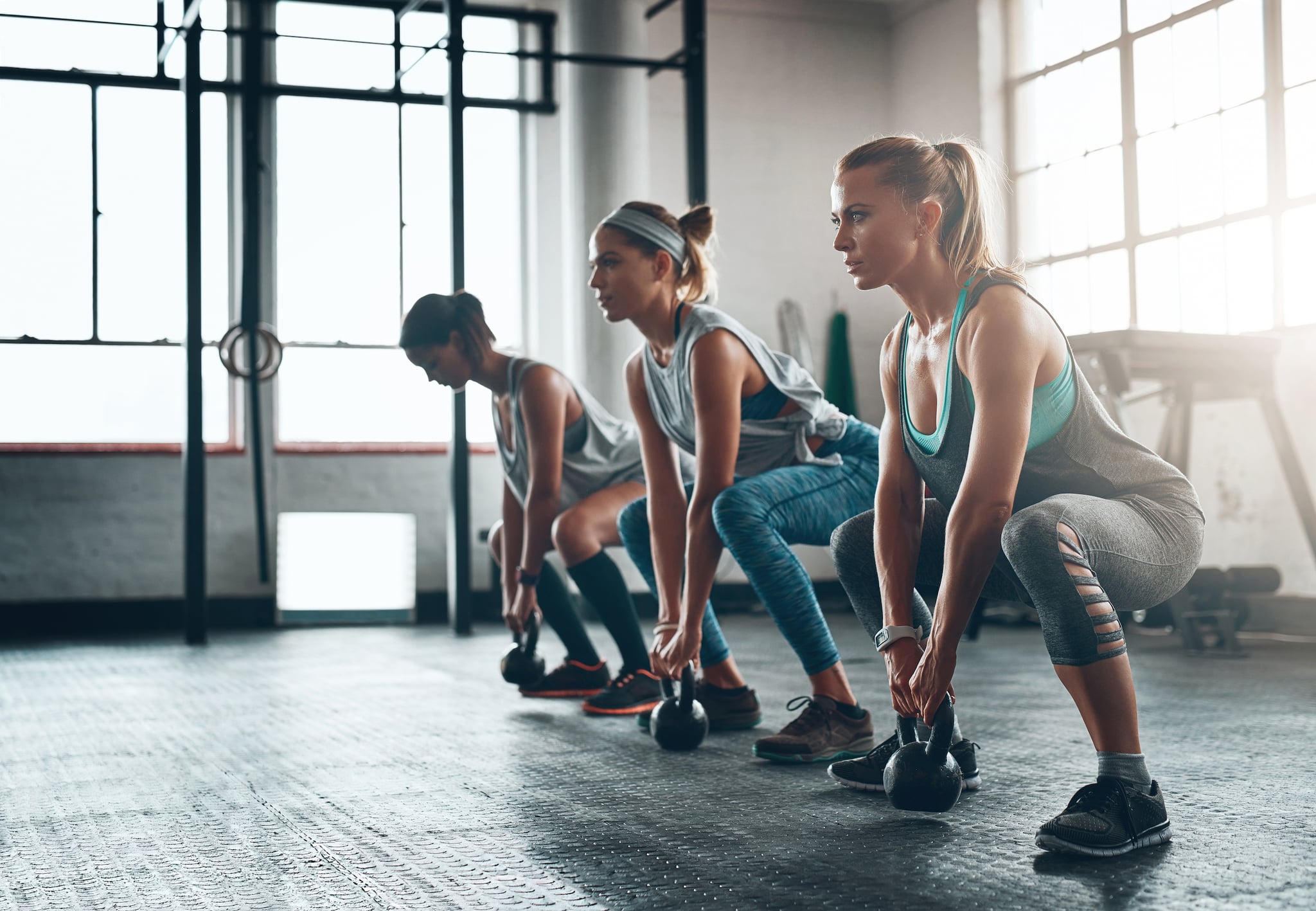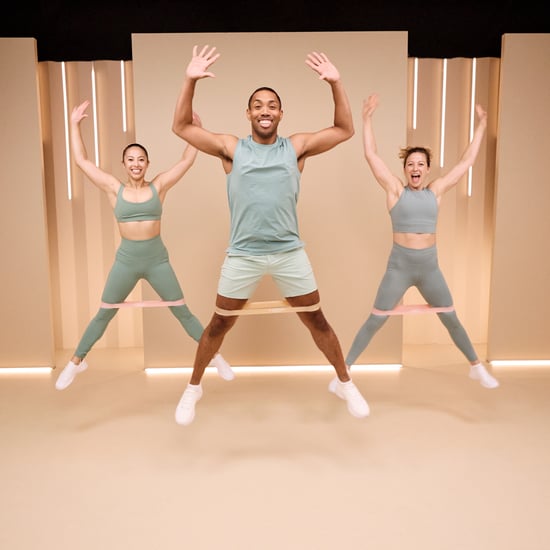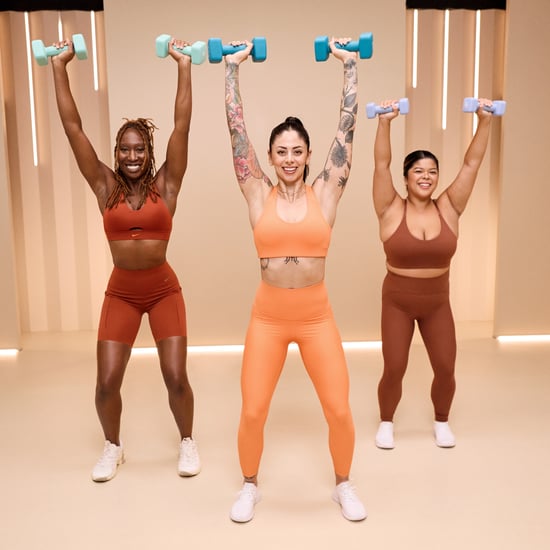How to Squat Without Knee Pain
Do Squats Hurt Your Knees? Follow These 5 Pro Tips For Relief

There's nothing like a few sets of squats to really feel that glorious burn in your legs and booty. For some, though, the exercise staple is also a source of twinging knee pain — ouch.
Knee pain could very well be a symptom of a more serious injury, and if you're worried, you should see a doctor ASAP. But if you're only feeling the knee strain while you squat and not during other movements, your form could be to blame.
In other words, you might not be squatting the right way!
To find out how to avoid and eliminate knee pain while squatting, we reached out to two trainers for their expert tips on function and form for the powerhouse workout move.
Delia McNally, a NASM-certified personal trainer at New York Health & Racquet Club in New York City, said squats not only work the glutes, but also the hamstrings and quadriceps.
Squats can also be modified in several different ways depending on your personal fitness goals and fitness level — you can use solely your body weight or add on weights. Or, you can adjust added weights as well as repetitions to focus on strength or toning, McNally noted.
If you are experiencing pain, Colette Nguyen, a NASM-certified personal trainer and master trainer at Crunch Fitness on 59th Street in New York City, suggested reaching out to a medical professional to be cleared for activity. Once you get the go-ahead, it's time to take a closer look at your form.
"Squats are a knee-dominant lower-body exercise," Nguyen said. Hence why you might be feeling knee pain.
"Out of all the major joints that are involved in a squatting pattern — ankles, knees, and hips — the knees exhibit the most degree of flexion at the deepest point of the pattern," Nguyen added.
When there is knee pain, Nguyen tends to attribute it to a suboptimal movement pattern within the squat.
Not everyone's adjustments will be the same, but here are a few general tips to follow for painless squatting.
Check Your Squat Stance
To figure out what stance is best for you, try up to three reps of bodyweight squats with the feet placed directly underneath your shoulders, placed just outside your shoulders, and placed just inside your shoulders.
Nguyen said the most optimal squat stance will "allow you the most depth and ease of movement, while maintaining planted feet and an upright torso."
Watch the Weight in Your Feet
"Your weight should be evenly distributed throughout the whole foot for the entire duration of the movement," Nguyen suggested. "Shifting too much of your weight into the front of the feet while squatting is a common mistake that causes uneven effort distribution during the pattern, putting additional stress on the knees that could lead to knee pain or further exacerbate existing knee pain."
Access Your Knee Pathways
"The most common squat mishaps that can cause knee pain for people are knee valgus or knee varus," McNally said.
Knee valgus occurs when knees cave in, while knee varus occurs when knees turn outward. Your knees also should never "fall forward" and come past the toes, as that could mean your weight is not on your heels.
"All of these occurrences cause pain because they put the knee at a compromising joint angle position where they are required to produce too much torque at the joint," McNally said.
Instead, your knees should remain in line with your toes. McNally added, "On the drive up, you should actively push your knees out in order to ensure that knee valgus does not occur."
Implement Strengthening Exercises
If you do suffer from chronic knee pain, McNally suggested adding exercises to your program that strengthen the muscles around your knee. However, these should be monitored and approved by a professional.
"Exercises that can improve on knee pain are adductor-strengthening exercises, glute-activation exercises, and abductor- and gluteus-medius-strengthening exercises," she said.
Utilise the Glutes
There's that word again. If you're still having pain after fixing your stance and monitoring your feet and knee pathways, Nguyen said you might not be utilising your glutes in the proper way, especially if the most challenging part of the squat is standing back up.
"The glutes cannot be active for the entire duration of the squat," Nguyen said. "Being the primary muscle group that is responsible for hip extension, the glutes will need to release and be allowed to lengthen in order to even descend into the squat."
The glutes should turn back on and contract once the squat reaches maximum depth, allowing the body to return to a standing position.
Overall, Nguyen said a good squat should be smooth and painless.
"When in doubt, move more slowly to give yourself the opportunity to understand what exactly your body is experiencing as you go through the pattern."
Click here for more health and wellness stories, tips, and news.






